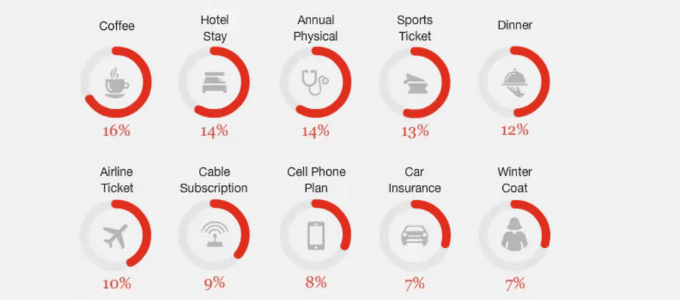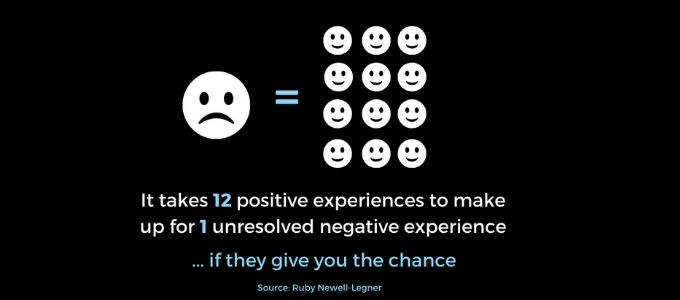
How To Make “Voice of Customer” Your Game Changer
Who are your favorite companies, and what makes you brand loyal? People typically answer this question based on how well a business understands and meets their needs which come from Voice of Customer initiatives.. Buying decisions go way beyond price as we often pay a higher cost to shop at a particular place.
Consider coffee, for example. Customers, including me, spend triple the price at Starbucks compared to other local coffee shops. Why would we pay more money on purpose? The reason is that the most reputable brands, like Starbucks, proactively LISTEN to the voice of the customer (also referred to as VoC) and use feedback to deliver personalized experiences that exceed customer expectations.
Research proves the value of doing CX right, such as a study conducted by PWC. People were asked: “How much would you pay for the following product or service if the company provides a great customer experience?” As shown in the image below, the answer is a lot, and getting it right is real!
The price premium for great customer experience:

 Source: PWC Future of Customer Experience Survey
Source: PWC Future of Customer Experience Survey
Best in class companies also care about employee views and empowers their staff to deliver customer excellence. Their competitive edge comes from humanizing business, and you can apply the same principles no matter where you work.
THREE WAYS TO DIFFERENTIATE YOUR BRAND
#1. Leverage Voice of Customer (VoC) In Everything You Do
VoC is a valuable research method that enables you to understand the difference between customer expectations and how well you deliver what they need. Even if you believe there is no gap, your customer may think differently, and you must know that to adapt your strategies. Customer perception is YOUR reality.
Asking customers about their overall satisfaction level helps you gauge the likelihood of them continuing to purchase and recommend your products and services. Getting high-level feedback is good, but the magic happens when you dig deep into the customer journey. I highly recommend you ask customers to rate their experiences and provide comments about EVERY interaction point, commonly referred to as “moments of truth.”
If you have not launched a business and do not have customers yet, then co-create a journey map with your target audiences (also referred to as personas). There are plenty of resources on the internet to guide you through the process, including my blog, DoingCXRight. My point is that getting Voice of Customer feedback in the right way and at the right time is essential for business success.
Most people rely on surveys as their Voice fo Customer source. While valuable, it must not be your only method of getting customer feedback. Additional useful data comes from:
- Website contact forms
- Interviews (online and in-person)
- Social media
- Ratings and Reviews (on your site & external rating pages)
- Website visitor behavior analytics
- Customer Care Call Data
- Website Live Chat
I recommend aggregating and centralizing all VoC insights to understand your customers’ views from a holistic perspective. It’s a critical job function, so either assign the role in your organization to someone who has the right skill sets, or outsource the work.
Step 2: Turn Voice of Customer Data Into Actionable Insights.
Obtaining customer feedback and analyzing the data takes time, but it is well worth it. You can’t possibly develop products, services, and market messages without understanding what your customers think and feel.
There are tools to help you compile, analyze, and prioritize data so that you know where to focus your improvement efforts. Some reputable time-saving platforms include Qualtrics. Medallia. Hubspot. Clarabridge, and more. They vary in capabilities and costs. If you have minimal or no budget, then start with manual methods of collecting customer feedback and using the data to inform your business decisions and changes.
#3: Close The Loop With Customers
If you ask customers what they think, then inform them what actions you took because of their feedback. For example, if you lead a focus group to design a new product, follow up with participants to show what you created because of their input. Even better, offer a discount that is not available to the public to express appreciation. If you have a centralized survey team, who calls customers share recordings and notes with your sales teams so they can contact customers, rectify issues, and thank them, too.
THE GAME CHANGER
Top performing companies combine Voice of Employee (VoE) and Voice of Customer (VoC) as part of their decision-making process. Asking employees for feedback makes them feel heard and valued. And, when that happens, their commitment and engagement to deliver customer satisfaction increases. Happy employees fuel happy customers. That is the formula for Customer Experience (CX) success.
REMEMBER:
Proactively ask for feedback and use the insights to improve customer and employee experiences. Let them know of what changes occurred because of their input, as that is how you gain loyal brand advocates. On the contrary, if you do not follow CX best practices, people will switch to a competitor. According to PWC,
“1 in 3 will leave a brand they love after just one bad experience. 92% would completely abandon a company after two or three negative interactions.”
It costs a lot of time and resources to make up for one unhappy experience.

I can’t say it enough….
Customer Experience must be intentional and never an afterthought. Make sure you are NOT just TALKING about it but actually DOING CX RIGHT!






